Trout Fishing With PowerBait: Real Users and Guides Advice
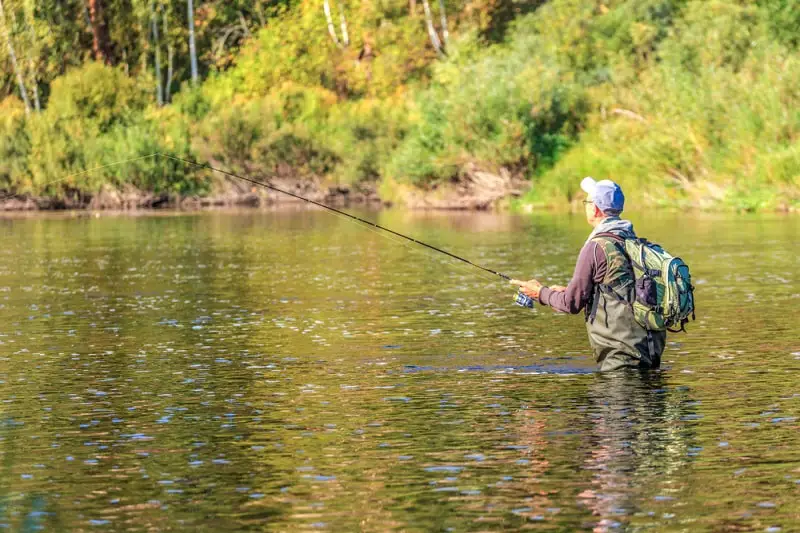
I’m going to discuss trout fishing with Powerbait trout bait as an angler and a veteran guide who has used and tested Berkley Powerbait in all types of conditions and for wild and stocked trout.
I’m also going to compare fishing with Powerbait for trout versus fishing with other baits for trout and provide my honest opinion on which is best.
Mastering Trout Fishing Using Berkley Powerbait
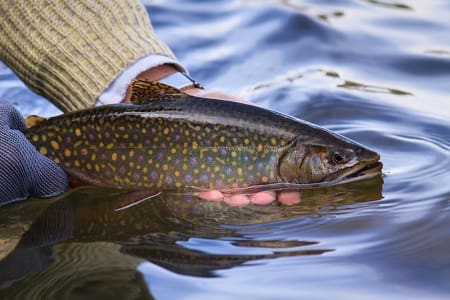
Let me be clear, I am in no way affiliated with the Berkley company or this product.
However, unlike other articles written on catching trout with Powerbait doughs, and despite what the company says about its own product, and despite what endorsed anglers and guides say, trout are not smart, and at times, they will literally put just about anything in their mouths, including Powerbait Trout Bait Doughs!
So, is Powerbait Trout Bait really as good as they say it is? Is Powerbait going to help you catch more trout? Should you use Powerbait for trout fishing? And, lastly, do top guides use powerbait for trout?
These are questions you should be asking yourself and are questions I will answer in this article.
Understanding PowerBait Trout Bait
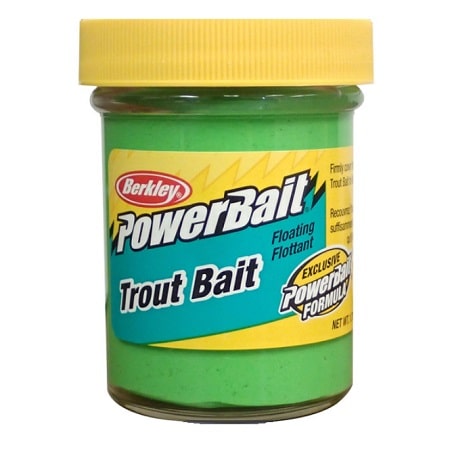
PowerBait, also known as a dough bait, is easily shaped into tiny balls using your hands. It is the product of combining PVC with oil-based resin, together with an assortment of scent-related chemicals.
The result is a scent that the company claims fish find irresistible.
There are other Powerbaits for trout which I’ll discuss below.
Is Powerbait Natural?
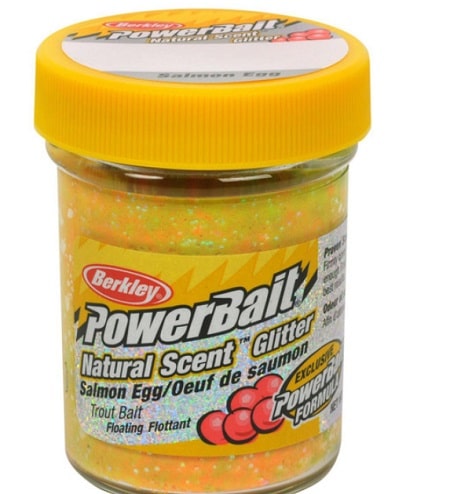
PowerBait is claimed to be a natural-scent trout bait that resembles and tastes like live bait. The company claims that scientific tests have proven it to outperform salmon eggs and all other prepared baits.
It is enhanced with natural ingredients found in conventional trout bait to amplify its power to attract trout.
But are these claims really true in real-life fishing conditions and not in a tank full of raised fish? That is debatable. If it works that well, wouldn’t every trout guide out there have a vest full of Berkley Powerbait? Why would they need anything more, I mean if it really outperforms other baits, why not just use Powerbait?
I will reveal the answers to these questions below.
Preferred PowerBait For River Trout

Berkley Powerbait Dough is a bait choice for anglers pursuing Rainbow trout, brown trout, and brook trout. Steelhead fishing with Powerbait and salmon fishing with Powerbaits are more common with select Powerbaits.
This trout bait, which has a unique attractant formula, has been reported to be responsible for the highest number of Rainbow trout captures.
Since most angler never reports their catches, this can not be a verified statement and anyone claiming this does not have all the facts.
But that does not mean it can’t catch a lot of rainbow trout, or other trout, especially under the right conditions combined with a very good presentation.
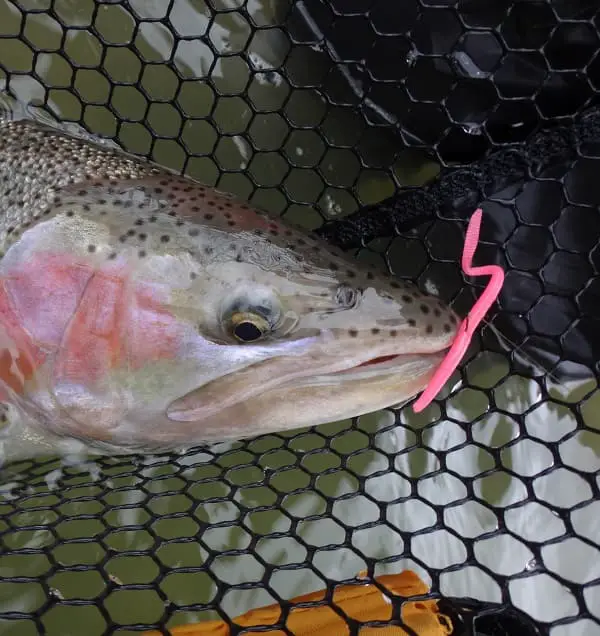
My personal experience and conclusion is that there are two Powerbait products that I use and find effective.
The Powerbait eggs can be good at times, and my favorite and most effective Powerbait is the Powerbait Trout worm.
I have caught thousands of trout, steelhead, and even some salmon on plastic worms.
Some Berkley Products To Consider: I’ve been able to catch steelhead on all of these.
- Berkley PowerBait Magnum Power Eggs
- Berkley PowerBait Magnum Garlic Power Eggs
- Berkley PowerBait Power Wigglers
- Berkley PowerBait Floating Trout Bait Dough
- Berkley PowerBait Natural Scent Glitter Floating Trout Bait Dough
- Berkley PowerBait Power Honey Worm
- Berkley Trout Worm: My most effective Berkley product
Essential Tackle And Setup For Catching Trout With PowerBait
The following gear will be required to catch trout using Powerbait, or other baits:
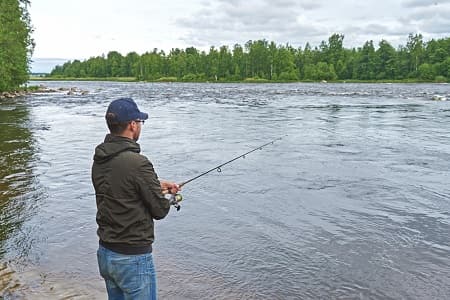
Rod and reel: A rod roughly 6 to 7 feet in length is standard for fishing trout in lakes but rods of 10 to 12 feet are better in rivers. Match the rod with either a spinning reel or a baitcasting reel that is easy to cast and suitable for a lightweight line.
Main line: Typically, a line weight of 4 to 6 pounds is ideal, and there are numerous advanced and basic options available. A 6-pound line is versatile and can be used for various fishing types.
If some anglers have a heavier line already spooled on their reels, it is vital to at least use a lighter fluorocarbon leader so the trout does not see the line. Trout seeing the line is a big reason why many anglers struggle to catch trout.)
Weight: For bottom fishing, seasoned PowerBait anglers usually use a sliding sinker or an egg-shaped weight, and in sizes of ¼ or ½-ounce. The reason for the sliding weight is that a secured weight could be sensed by the trout, making them drop the bait before being hooked.
For fishing with Powerbait under a float, I will use multiple small split-shot weights spread out on the leader.
Swivel: I use swivels for various trout fishing rigs.
Leader: Use a low-visibility fluorocarbon leader of 2 to 4-pound test. It should be lighter than the main line.
Usually, the length of leaders ranges from 12 to 30 inches. If the bottom has thick weeds, lengthen the leader to 3-4 feet, so the bait can float up above the weeds or rocks, making it visible to passing trout.
Ideal Powerbait Hook
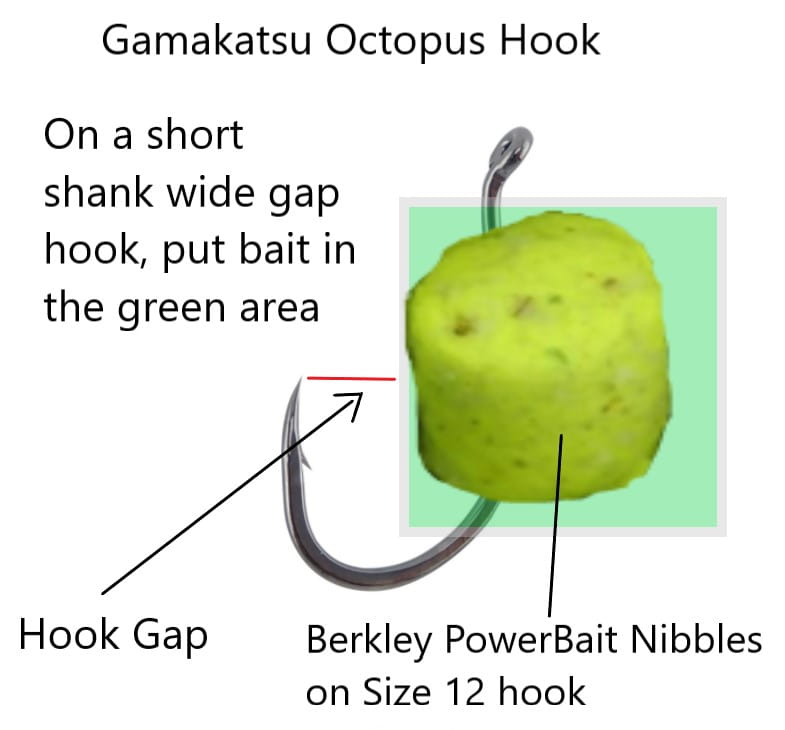
When it comes to hooks, there are three reasons why many anglers struggle to catch trout: one is because they use the wrong type of hook, the second is because they use the wrong size hook, and the third is because they don’t know how to put the bait on properly.
Use a good quality high hooking and high holding percentage hook like a Raven Specimen or Gamakatsu Octopus hook in sizes 10 to 12.
Other hooks suck and will prevent you from hooking fish.
Don’t Use Treble Hooks
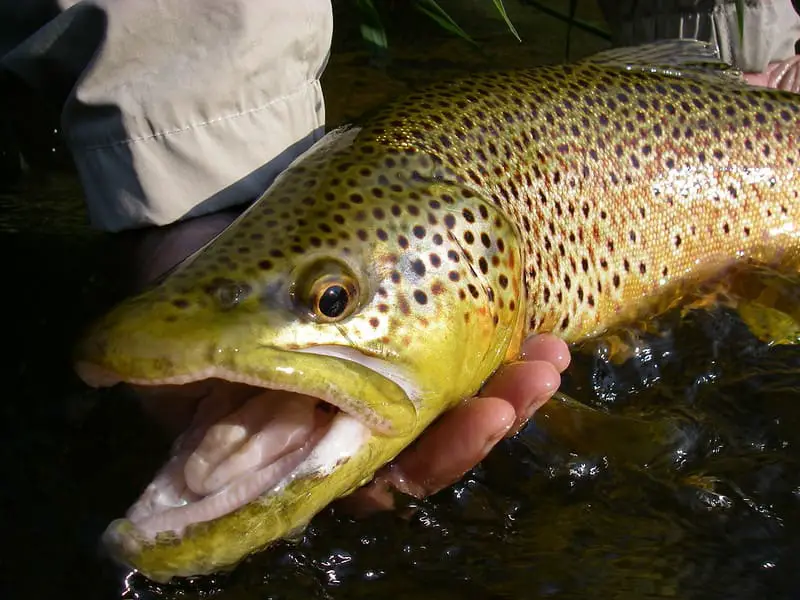
Small treble hooks are ok and do work well with powerbait, but mostly if you plan to keep the fish. If use treble hooks, use sizes 12, 14, or 16. Treble hooks are hard to remove and cause a lot of damage so I do not use them since I release a lot of smaller trout.
Other Things For Trout Fishing
In addition to PowerBait, consider having the following items:
- fishing licenses
- needle-nose pliers
- hand-wiping rags
- landing net
- Creel, bucket, or stringer
- fish-cleaning knife
- folding chair
- rod holder
Selecting Powerbaits For Trout
Purchase two or three jars with varying scents and colors to ensure you have what the trout want based on the conditions.
Floating baits are ideal for the primary approach discussed in this piece, but I only use the sinking variety when presenting a bait under a float.
Some baits come in pre-sized nugget form that can be pressed onto the hooks.
Which Powerbait Color Is Most Attractive to Trout?
When selecting the Powerbait’s color, brighter hues like orange, green, and rainbow are typically the best choice. These vivid colors are great at attracting trout.
The optimal color can depend on numerous factors, but commonly, bright yellow, orange, or rainbow-colored Powerbait is believed to be the most effective. Some of the top colors for Powerbait include: Orange Green Rainbow Yellow Hatchery pellet.
The bold colors allow the trout to easily spot the bait. If the weather and water conditions are murky, the bait’s scent will help to attract the trout.

Powerbait with glitter can also be used to increase visibility by reflecting sunlight. Colors like orange are particularly effective as they resemble salmon eggs, a favorite food of trout. Yellow Powerbait comes in “corn” and “cheese” variants, both of which have proven effective.
The Basics of Powerbait Fishing
Powerbait is especially effective when fishing for stocked hatchery trout. The most common method involves molding a marble-sized ball of floating dough bait onto a hook and fishing with it from a stationary position.
Powerbait will also work on wild trout but usually only in moving water where the trout do not have a lot of time to inspect the bait and refute it. In faster currents, trout will quickly decide to grab a bait or not, and this gives the angler a chance at catching even larger and smarter wild trout.
This is the reason I mentioned before that trout will at times put anything in their mouths. They put it in, then decide if it’s edible or not, and they will quickly spit out unnatural baits.
Best Method For Trout Fishing With Powerbait
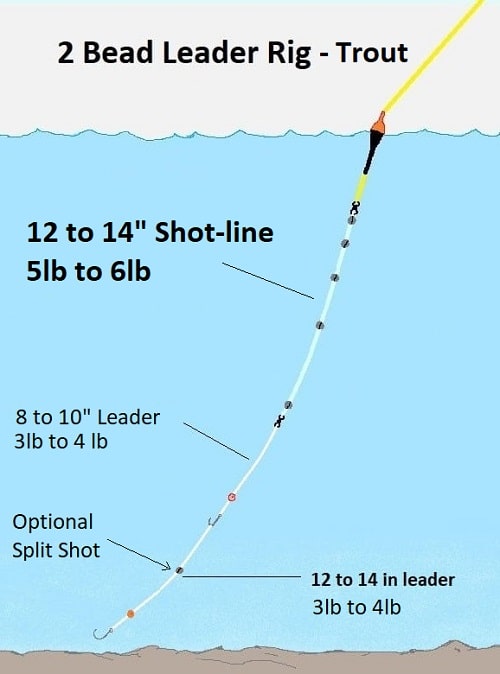
My most effective method for catching trout with Powerbait and most other baits is float fishing.
In a lake that is over 10 feet deep, I use a slip float to be able to cast well and to get very deep with the float.
Float fishing in rivers is an art, and it requires skill to catch the most trout possible. Most anglers don’t realize this and they miss a ton of fish.
In rivers, I prefer to use a fixed float if the river is 12 feet deep or less.
I also set up my float and leader so that I get a better drift. Float fishing is often the best method in sections of the river that are between three and twelve feet deep.
If float fishing in streams is something you want to try, check out my article on Float Fishing For Trout.
Other Great Methods To Catch Trout With Powerbait
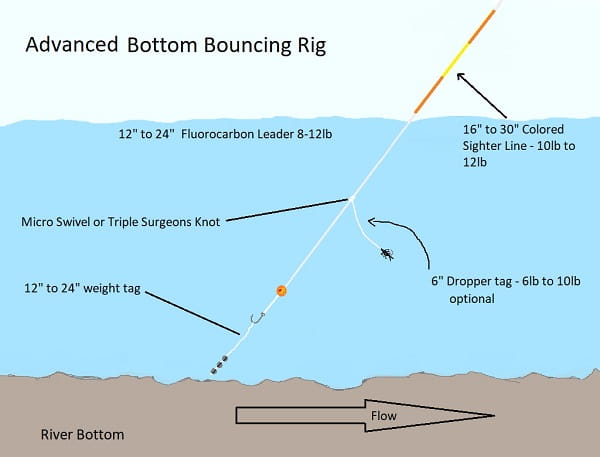
When fishing streams with water less than three feet deep my most effective method is Bottom Bouncing.
If it’s a massive river and I need to cast and fish at long distances or I need to fish deep in currents, my preferred method is Drift Fishing.
Still Water Bottom Fishing With Powerbait
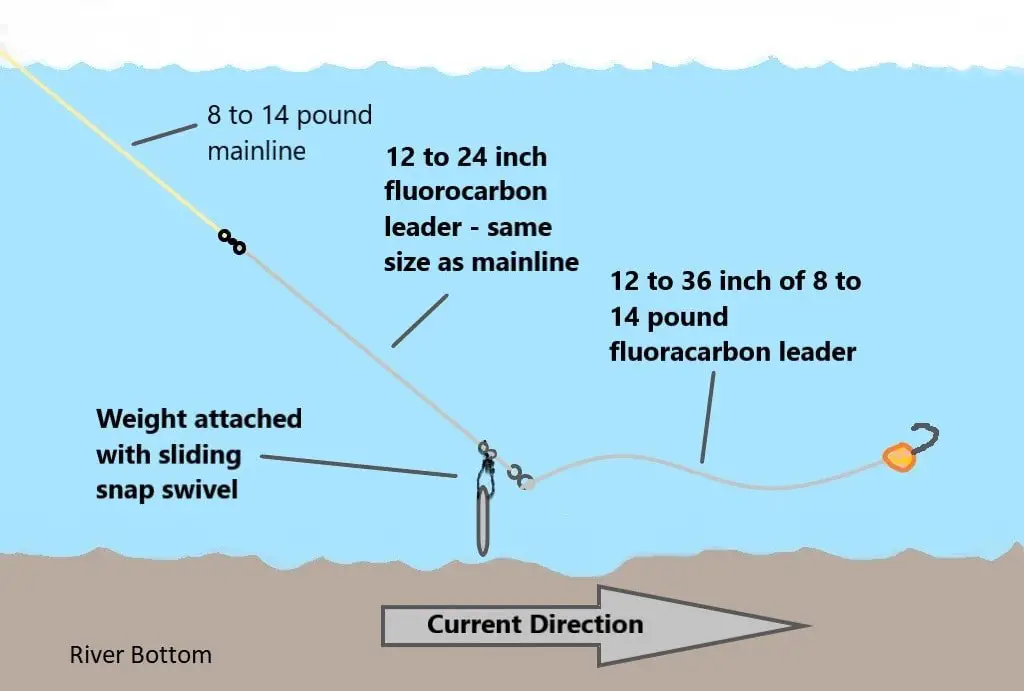
Ensure that the Powerbait is secure on the hook. After casting from the shore, dock, or boat, let the weight and bait sink to the bottom. It’s worth noting that some trout may take the bait on its descent.
Reel in slightly to remove most of the slack line. This allows me to notice a bite and set the hook accordingly.
Leaving a small amount of slack line gives the trout the chance to swim away a little before feeling the pressure, which can result in more successful catches.
Once the fish pulls enough line to bend the rod, give a firm hook-set.
Rig Up Properly and Effectively: Whether I fish in still water like lakes, ponds, and reservoirs, or I fish in small or large streams, I need to use a bait rig that works for that type of water. Check out my 5 most effective Powerbiat rigs that I use when guiding.
Advanced Powerbait Tips and Hacks
Below are some additional tips to help you have a more successful fishing trip.
Be Cautious of Line Visibility
Trout have excellent vision and can often see the fishing line, especially if it’s a heavier test line. Using a lighter test line may increase the chances of a successful catch. Consider using a 4-pound test line for optimal results.
Fish in the Right Weather Conditions
Trout tend to feed more aggressively during overcast weather conditions and in the early morning and late evening. Try fishing during these times for better success rates.
Mix Powerbait Types and Colors
If I am not having any luck with a single color or type of Powerbait, I will try mixing things up. I combine different colors or try different scented baits. Doing this may help find the combination that trout are interested in on a particular day.
Fish in the Correct Depth
Trout typically swim about one to three feet off the bottom of the water. Therefore, setting my bait to hang around that depth can improve success. Use the floating version of Powerbait to keep the bait two to three feet off the bottom. The key is to make sure that the bait floats off the bottom where the trout are likely to see it.
I also use the very effective drop shot method that many bass anglers use. This method puts the weight on the bottom and hangs the bait higher up the line.
Try a Variety of Locations
Different trout may favor different areas within a body of water. Some may prefer areas with lots of structure such as logs or underwater vegetation, while others may prefer open water. Try fishing in a variety of locations to increase the chances of catching trout.
Harness the Power of More Hooks
Some regions permit the use of two to three hooks for trout fishing. Having multiple hooks offers the advantage of testing different colors simultaneously and exploring different water levels.
It also allows for the use of a variety of PowerBait types, which can be beneficial in determining the preferred color and the fish’s preference. However, always verify the local regulations on multiple hooks before fishing.
Using Floating Powerbait
One notable attribute of PowerBait that seasoned trout anglers can attest to is its ability to float, positioning it right in the path of food-seeking trout which is usually one to three feet off the bottom is a great way to catch a lot more trout.
However, sometimes the bait may not float as high as I want. If this is the case, I just add more length to the leader or add a floating bead.
Should Additional Scent Be Added to PowerBait?
While PowerBaits come pre-infused with scents, some anglers believe that increasing the scent of the PowerBait ball, or even on other terminal tackle, can draw more fish to the bait. This added aroma may also mask any human scent on the bait.
Several companies, including Berkley, offer a range of liquid scent flavors. Berkley additionally offers PowerBait Dust, a dry mixture that enhances both scent and visual appeal.
Exploring Other Berkley Baits
While dough baits are one of the most popular Powerbait, there are instances when they will not work no matter what I do.
In such scenarios, having a supply of artificial worms, minnows, leeched, and grubs like Berkley’s PowerBait or Gulp versions can be a good idea. These synthetic baits can be added to the hook with the tail hanging and the hook exposed, thereby increasing the chances of trout getting hooked when they bite.
A floating Berkley worm works best for me in rivers with current and I actually prefer them over real worms sometimes, however, in lakes and ponds, for many anglers the plan is to let the worm sit near the bottom, and wait for a strike. This usually doesn’t work very well. Instead, a slow retrieve or a retrieve-stop (sink)-retrieve technique using sinking or floating worms can be a better option for trout.
Boat Fishing Strategy With Powerbait
If I’m fishing from a boat, watercraft, or even a dock directly above the fish, a popular method is to fish artificial worms “wacky style,” which is familiar to many bass anglers. Simply place the hook in the center of the worm and let the ends dangle.
While using a sinking bait for wacky worm fishing, keep in mind that some fish might steal the bait by grabbing the loose ends. Despite this, if this technique works, the increased number of strikes can compensate for lost baits.
Use a weight above the bait if necessary. A slow-sinking worm may trigger strikes while descending. Start by dropping it to the bottom and lift it slightly above. I jiggle it subtly or let the movement of the boat do it. I adjust depth, movement, and location until I start catching trout.
Is PowerBait Harmful to Fish?
While there’s no absolute certainty, indications from patent documents suggest that PowerBait might have a composition similar to traditional soft plastic lures, possibly based on poly(vinyl chloride).
The formulation is assumed to incorporate additional elements such as fishmeal, fish oils, and salts to elevate its appeal to fish. It’s said to be considered harmless to both fish and humans, but I wouldn’t eat it and it doesn’t sound safe to me.
However, a fish caught using Powerbait is safe to eat, as long as they are properly cleaned before consumption.
Comparing PowerBait and Gulp
The composition of the bait, be it oil-based or water-based, determines its softness. For instance, Berkley PowerBait is made with oil-based resins added to PVC, resulting in a softer texture. On the other hand, Gulp! is manufactured using water-based resins, marking the primary distinction between the two baits. This difference in composition leads to a higher scent dispersion in water-based resins.
Gulp seems to distribute its scent more effectively than PowerBait based on what I have read. This quality might render it more efficient in most conditions, and especially in murky waters or dense cover, as fish can potentially sense them better and be drawn towards them.
In terms of durability, Gulp products are generally regarded as more robust than those of PowerBait, although they might not be as flexible and, therefore, exhibit less action.
Since their initial launch, Gulp products have seen considerable enhancements and we may see more improvements in the future.
Other Baits Like Powerbaits
Remember, while Powerbait is the most commonly used dough bait, other types can also be effective.
These include the Gulp line from BerkleyPautzke Bait’s Fire Bait, Eagle Claw’s Nitro Bait, and YUM’s TroutKrilla Paste.
Is Powerbait really as good as they say it is?
as mentioned above, at times, hungry trout will put anything in their mouths, including Powerbait.
However, based on my findings and reports from other guides and from other anglers, often, other more natural baits will work much better than power, especially in real conditions and with wild fish. And also, especially in still water.
I’m not saying Powerbait doesn’t work or isn’t good, my experience and experience from some others is that other these other baits are more likely to catch trout than Powerbait.
Is Powerbait going to help you catch more trout?
Since it is a bait designed to catch trout, Powerbait will catch trout, especially newly stocked trout, however, be sure to have other good baits that are proven to be effective just in case the trout do not want Powerbait-type products.
Using real worms, minnows, leeches, and grubs are more likely to help you catch more trout.
Should You Use Powerbait For Trout Fishing?
For freshly stocked trout that have been feeding on pellets all their lives, Powerbait nuggets can be a good bait.
At times, powerbait will catch fish, but very rarely have I found that Powerbait will catch more fish than proven high-percentage baits, especially in still water.
Do Top Guides Use Powerbait For Trout?
I know a lot of guides and I have been a guide myself for over 22 years. I’ve even trained many other guides. Guides always want their clients to catch as many fish as possible, so they use proven effective baits that are high percentage, and they ignore low percentage baits.
If Berkley Powerbait dough was as good as it is claimed to be, most or all trout guides would use it. But I don’t know any guides that use Powerbait dough often, or at all, which to me indicates it is NOT their most effective bait.
I do know many guides that use and like the Berkley Powerbait worms and eggs, so these could be considered as bait when fishing for tout.
Honestly, it makes no sense to me as a guide or any angler to use a less effective bait for trout, which is why I never use Powerbait Dough, but that’s my opinion.
Tight Lines,
Graham

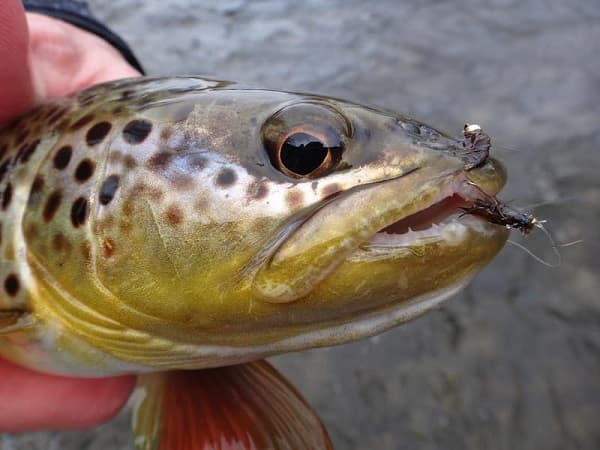
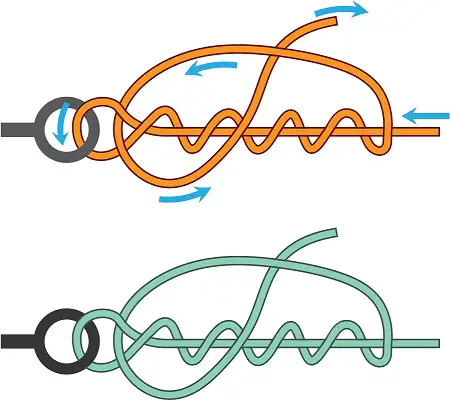
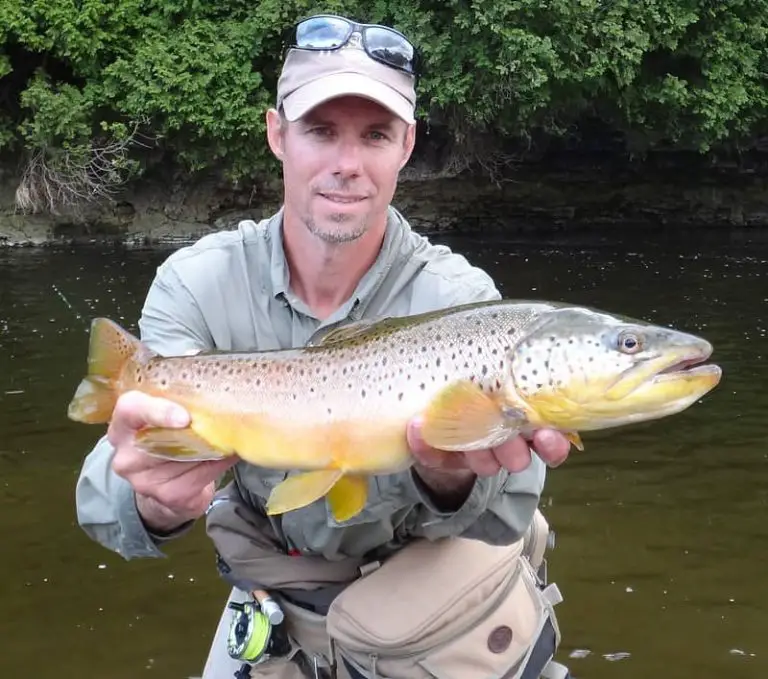
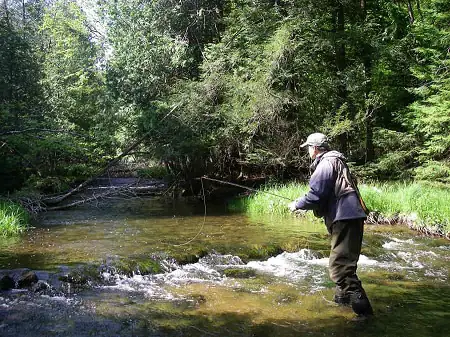
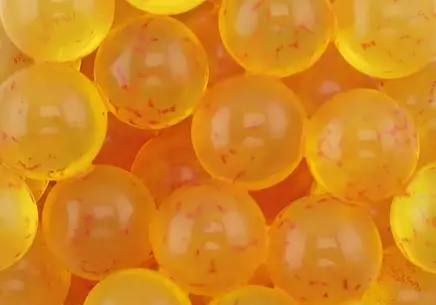
great write up! I’ve had some success with bottom fishing with floating power bait and find myself gut hooking the trout most of the time. I’d love to avoid this because I don’t keep the fish, any tips on how to set the hook?
Hi JP,
Try the still water rig with a sliding weight. This allows the line to be pulled freely by the trout and then the only thing I can say is pay attention and set the hook as soon as the fish pulls. You can see the rig at https://troutandsteelhead.net/trout-fishing-rigs/
Good Luck
Graham